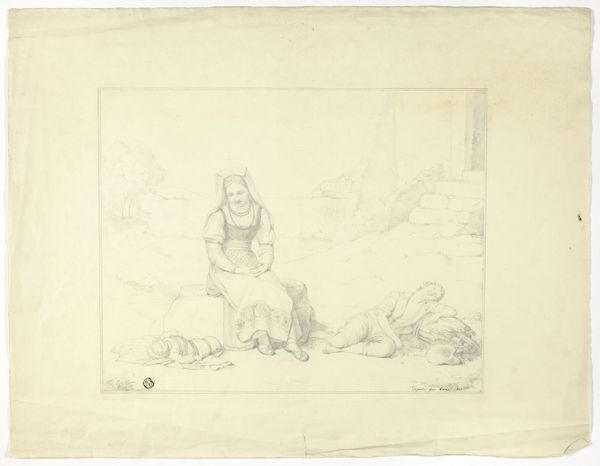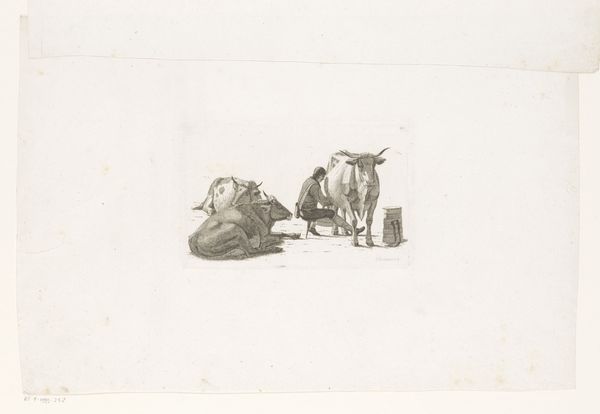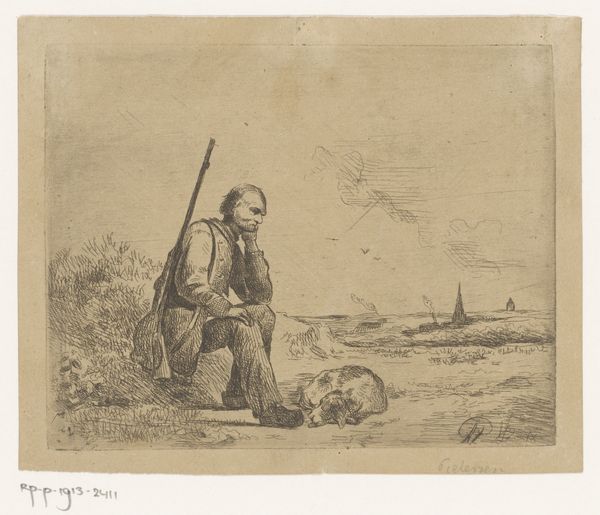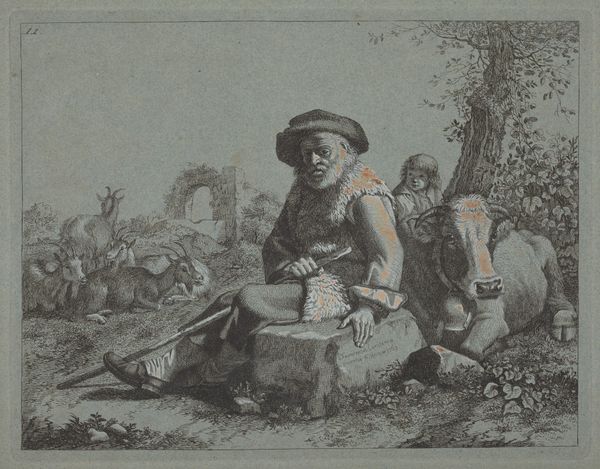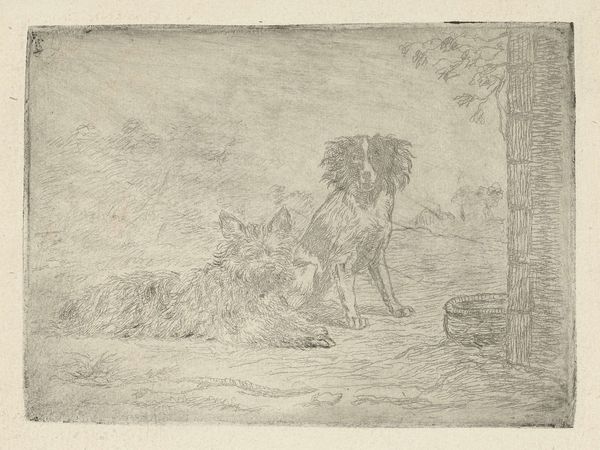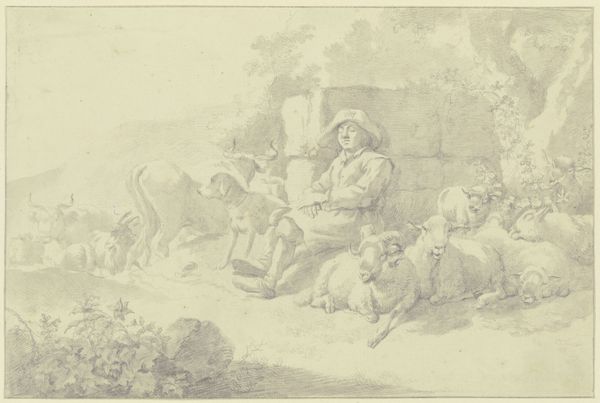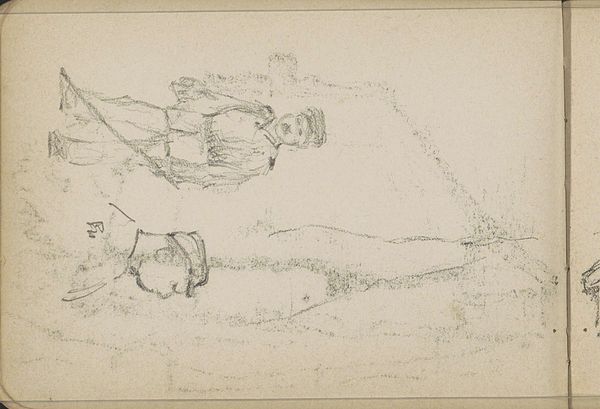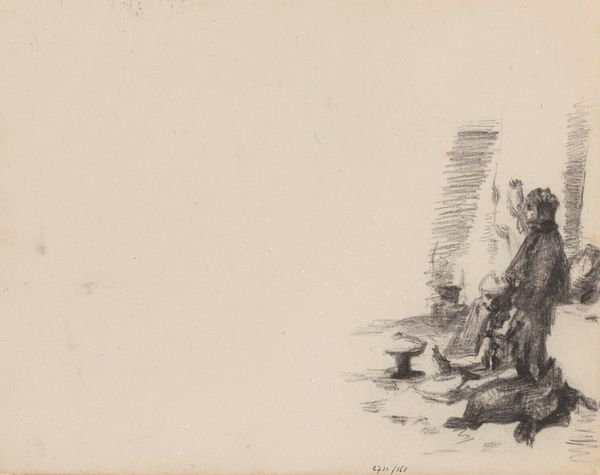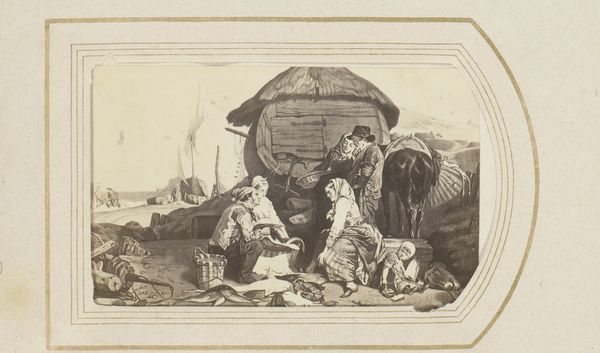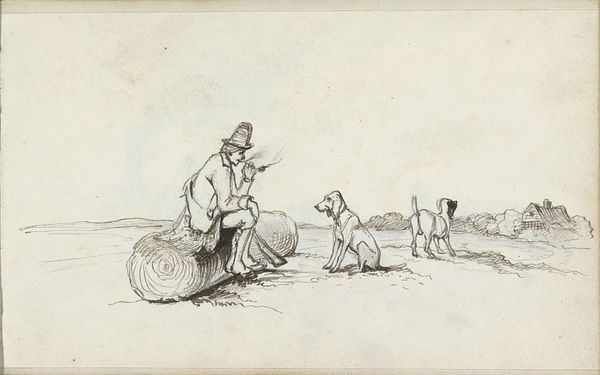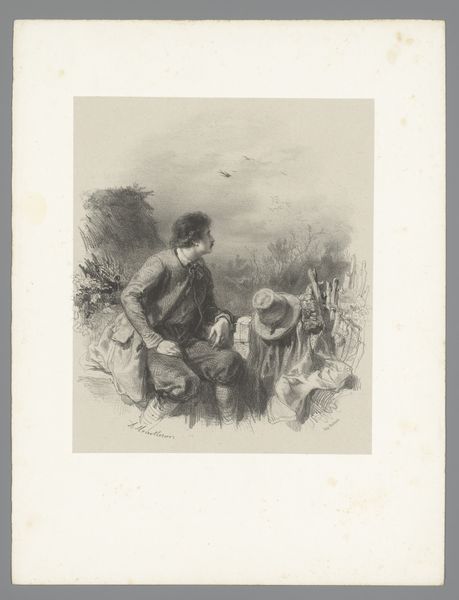
drawing, charcoal
#
pencil drawn
#
drawing
#
landscape
#
charcoal drawing
#
pencil drawing
#
genre-painting
#
charcoal
Dimensions: height 161 mm, width 202 mm
Copyright: Rijks Museum: Open Domain
Editor: Here we have Cornelis Saftleven’s "Slapende herder met geiten", or "Sleeping Shepherd with Goats," dating roughly from 1617 to 1681. It’s a drawing made with charcoal and pencil. I find it very tranquil; the reddish monochrome and the soft rendering contribute to the calm scene. How do you interpret this work, particularly regarding its materials? Curator: Considering it through a materialist lens, I'm drawn to the artist’s choice of humble materials – charcoal and pencil. This elevates what might be seen as mere "preparatory" sketches to finished art. How does the accessibility of these materials, think about their everyday use, challenge the traditional hierarchy between fine art and craft in your opinion? Editor: I suppose it democratizes art-making in a way. Anyone could potentially pick up charcoal and create an image. So the focus shifts from expensive materials to the artist's skill and perspective. Curator: Precisely. And we must think about where this charcoal and these pencils came from, how they were produced. Saftleven is making a claim about labour through using drawing media like charcoal: there's both the work depicted (the shepherd), the physical toil, and Saftleven's artistic labor. How might Saftleven be using drawing to flatten this distinction? Editor: By depicting the everyday, using accessible, cheap material that require labour to both manufacture and utilize. I never really thought about that until now! Curator: Exactly. Think too about how landscape became so important and prevalent: people had to measure land to make and enforce ownership; those skills relate to representation, drawing. And what did it mean to depict the life and labor of a Shepherd in the 17th century? Who consumed those images? Editor: So much to consider about this "simple" drawing! It's less about pastoral idealism, and more about material conditions of both artistic creation, human labour, and animal husbandry.
Comments
No comments
Be the first to comment and join the conversation on the ultimate creative platform.
